-
Courses

Courses
Choosing a course is one of the most important decisions you'll ever make! View our courses and see what our students and lecturers have to say about the courses you are interested in at the links below.
-
University Life

University Life
Each year more than 4,000 choose University of Galway as their University of choice. Find out what life at University of Galway is all about here.
-
About University of Galway

About University of Galway
Since 1845, University of Galway has been sharing the highest quality teaching and research with Ireland and the world. Find out what makes our University so special – from our distinguished history to the latest news and campus developments.
-
Colleges & Schools

Colleges & Schools
University of Galway has earned international recognition as a research-led university with a commitment to top quality teaching across a range of key areas of expertise.
-
Research & Innovation

Research & Innovation
University of Galway’s vibrant research community take on some of the most pressing challenges of our times.
-
Business & Industry

Guiding Breakthrough Research at University of Galway
We explore and facilitate commercial opportunities for the research community at University of Galway, as well as facilitating industry partnership.
-
Alumni & Friends

Alumni & Friends
There are 128,000 University of Galway alumni worldwide. Stay connected to your alumni community! Join our social networks and update your details online.
-
Community Engagement

Community Engagement
At University of Galway, we believe that the best learning takes place when you apply what you learn in a real world context. That's why many of our courses include work placements or community projects.
BioSolid Mechanics
Using state-of-the-art computational and experimental techniques, Dr. Conway explores medical device performance and provides insight into clinical adverse events following treatment. Her work is at the intersection of regulatory, academic and industrial interests, focusing on research at the interface of engineering and medicine.
Dr. Conway seeks to understand role of disease structure in relation to atherosclerosis and valvular calcification. These conditions are often treated with structural implants, such as stents or prosthetic valves, and these interventions can benefit greatly from mechanics-based engineering insights. Using finite element simulations, she works to predict patient response to structural implants, paying particular attention to disease representation and the role of calcification in device failure. By designing sophisticated bench-top mechanical test-rigs, she determines structural implant performance, validates computational predictions, and further advances our understanding of device performance with more realistic physiological boundary condition assessment for engineering analyses.
Dr. Patrick McGarry is a lecturer in Biomedical Engineering and the Program Director for the Undergraduate Degree in Biomedical Engineering at NUI Galway. Dr. McGarry’s research group has developed an internationally leading reputation in the field of Biomechanics, and in particular computational cell mechanics. Dr McGarry has to date supervised 11 PhD students to completion. He was the primary supervisor of six simultaneous successful PhD completions in October 2012. This achievement is an official record for NUIG. All six students completed in exactly four years (October 2008-October 2012), graduating in March 2013. His PhD students have been awarded numerous international honours and awards (ASME, Engineers Ireland, World Congress of Biomechanics). Dr. McGarry is PI on three major Science Foundation Ireland research grants for Cell Contractility Modelling. His research group has published over 53 papers in leading journals in the field, and presented over 70 research papers at leading international conferences in the field. Dr. McGarry has developed strong collaborations with leading international research groups, including: University of Cambridge; University of California, Santa Barbara; Georgia Institute of Technology; and Rice University.
Biomedical Engineering
Dr. Will Ronan is a Lecturer in Biomedical Engineering. He completed his Ph.D. in Mechanical Engineering at NUI Galway (graduating in 2013 and funded by the Irish Research Council for Science, Engineering and Technology Embark Scholarship) on the mechanics of cells. This research primarily focused on development and implementation of constitutive material models and adhesion models using the finite element method. During this time, he spent one year as a visiting scholar in the University of California, Santa Barbara. In 2013, he was awarded a Science Foundation Ireland Short-Term Travel Fellowship which he used to visit the University of Cambridge. This research collaboration expanded on his previous doctoral work to examine the kinetics and mechanics of cell adhesion. In 2014, he began a post-doctoral research project at the Cambridge Centre for Micromechanics on the tensile ductility and toughness of lattice materials & polymer foams. He returned to NUI Galway in 2016, originally as a faculty member in Mechanical Engineering, before moving to his current role in Biomedical Engineering.
Dr. Claire Conway
Dr. Claire Conway uses advanced Finite Element techniques to predict the response of soft tissue to device implantations. In particular Dr. Conway’s interests include the implantation behaviour of coronary stents as in-stent restenosis (ISR – when a blockage reforms after stent implantation) remains a critical issue within the clinical community. ISR is hypothesized to occur for reasons that include injury to the vessel wall caused by stent placement. To reduce the incidence of ISR more detailed analysis and understanding of soft tissue response to implants is needed.

Dr. Conway is able to predict the patient specific response to coronary stenting through using imaging derived vessel geometries and subjecting the virtual vessel to stent deployment.
Video shows An example of coronary stent being deployed in an imaging-derived diseased arterial vessel.
Virtual Histology-Intravascular Ultrasound (VHIVUS) imaging captures the plaque constituent volumes in the wall, such as fibrous, lipid, and calcified regions, allowing Dr. Conway to predict the vessel response to stent implantation.

In collaboration with Dassault Systèmes, Dr. Conway is able to predict the virtual dynamics of a whole heart model using finite element techniques. The Living Heart Project (LHP) model is a 3D multi-physics model of the human heart that simulates a complete cardiac cycle.
Dr Conway uses this model to advance our understanding of valvular disease and how this impacts whole heart function and performance.
Living Heart Model completing a cardiac cycle.

Dr. Patrick McGarry

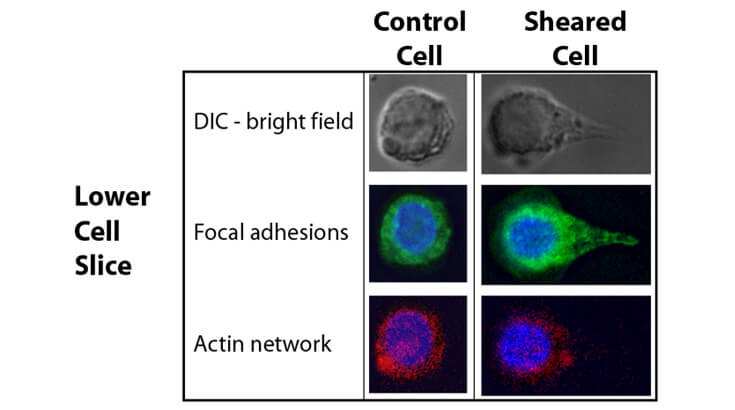
Dr. William Ronan
Biodegradable polymers are increasingly common in biomedical engineering; applications include bioresrobable devices such as cardiovascular stents and tissue engineering scaffolds. The mechanical properties of the polymers are linked to the polymer microstructures and as that structure breaks up during degradation, the mechanical properties change. Mathematically modelling techniques are required at both the material and device scale to predict and optimise the performance of such devices. The image here shows the changes in molecular weight during degradation in the struts of a tissue engineering scaffold, further details of which can be found here.
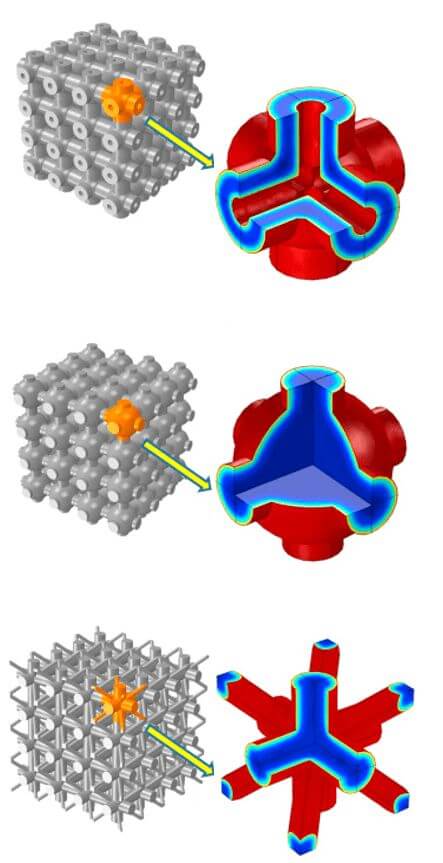
This animation shows the failure of a honeycomb lattice under tension. Lattice materials can provide incredible stiffness and strength in many applications across engineering disciplines. In biomedical engineering, they are used in lightweight orthopaedic devices and also as tissue engineering scaffolds. There is a complex relationship between the original material used to make the lattice, the architecture or organisation of the lattice, and the mechanical properties such as the stiffness, strength, and toughness or ductility. Finite element simulations allow for the optimisation of these lattices so that they resist crack growth and are damage tolerant. More details can be found in the original article.

The image shows a computational investigation of adhesions between cells. Novel experimental techniques seed cells on small pillars – analysis of the deflections of the pillars allows for the calculation of the forces generated by the cells and also of the forces exerted by each cell on its neighbour. Understanding how such forces are generated and controlled by cells and how they respond to different environments has implications for many different aspects of biomechanics including wound healing and tissue engineering. For more information see the original article.
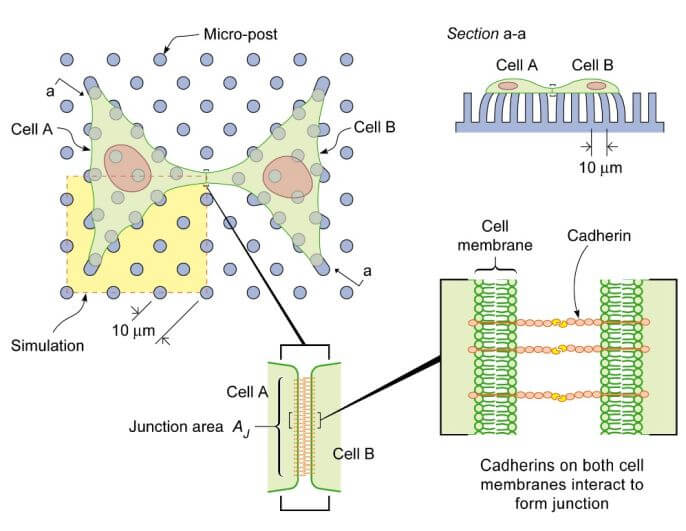








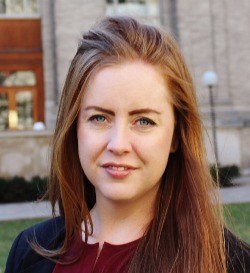 Dr. Claire Conway
Dr. Claire Conway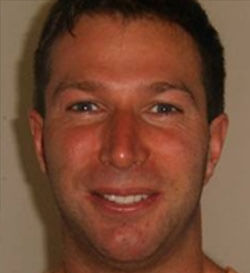 Dr. Patrick McGarry
Dr. Patrick McGarry Dr. William Ronan
Dr. William Ronan






